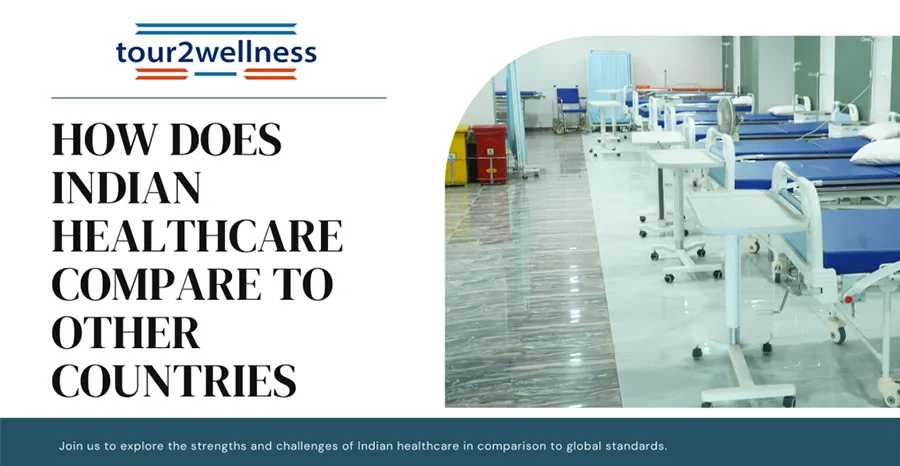
A Comparative Analysis of Indian Healthcare System against Global Standards
India’s healthcare system is a complex network of public and private providers that serve a population of over a billion people. It faces unique challenges and opportunities that warrant a comparison with healthcare systems in other countries. This article aims to shed light on how Indian healthcare compares to global standards, emphasizing factors such as accessibility, affordability, quality of care, health outcomes, and cultural influences.
Accessibility and AffordabilityAvailability of Healthcare Facilities
⦁ Despite recent improvements, rural areas in India still lack adequate healthcare facilities.
⦁ Urban centers have more options, but quality varies significantly.
Cost of Medical Treatment
⦁ The cost of medical treatment in India is relatively lower compared to developed countries.
⦁ However, out-of-pocket expenses remain a burden for many households.
Health Insurance Coverage
⦁ Health insurance penetration in India is low, leading to financial constraints for many individuals.⦁ Government initiatives aim to increase coverage through schemes like Ayushmaan Bharat.

Quality of Care and Infrastructure
Healthcare Professionals and Training
⦁ Indian healthcare professionals are highly skilled, but there is a shortage in certain specialties.
⦁ Continuous medical education and training programs are essential for maintaining quality standards.
Hospital Facilities and Technology
⦁ Leading hospitals in India offer state-of-the-art facilities and advanced technology.
⦁ However, rural areas face infrastructure challenges that limit access to quality care.
Medical Research and Innovations
⦁ India is a hub for medical research and innovation, contributing to global healthcare advancements.
⦁ Collaboration between academia, industry, and government is crucial for fostering innovation.
Health Outcomes and Public Health Initiatives
Life Expectancy and Mortality Rates
⦁ India has seen significant improvements in life expectancy over the years.
⦁ However, infant mortality rates and non-communicable diseases remain areas of concern.
Disease Prevention Programs
⦁ Public health initiatives like vaccination drives and awareness campaigns have helped in disease prevention.
⦁ Challenges such as sanitation and hygiene continue to impact public health outcomes.
Healthcare Policies and Regulations
⦁ Regulatory frameworks play a pivotal role in shaping the healthcare landscape in India.
⦁ Striking a balance between regulation and innovation is crucial for sustainable growth.
Cultural and Socio-Economic Factors
Influence of Culture on Healthcare Practices
⦁ Cultural beliefs and practices influence healthcare-seeking behavior in India.
⦁ Integrating traditional medicine with modern healthcare can improve outcomes.
Socio-Economic Disparities in Access to Healthcare
⦁ Socio-economic disparities impact access to healthcare services in India.
⦁ Bridging the gap through targeted interventions is essential for achieving equitable healthcare.
Public Perception of Indian Healthcare System
⦁ Public perception of the Indian healthcare system varies based on individual experiences.
⦁ Transparency, accountability, and patient-centered care can help build trust.
Summary
In conclusion, the comparison of Indian healthcare with other countries reveals a mix of strengths and challenges. While India has made significant strides in various areas, there is still room for improvement to ensure better healthcare outcomes for all. By addressing issues related to accessibility, affordability, quality of care, and cultural influences, India can work towards achieving global healthcare standards.